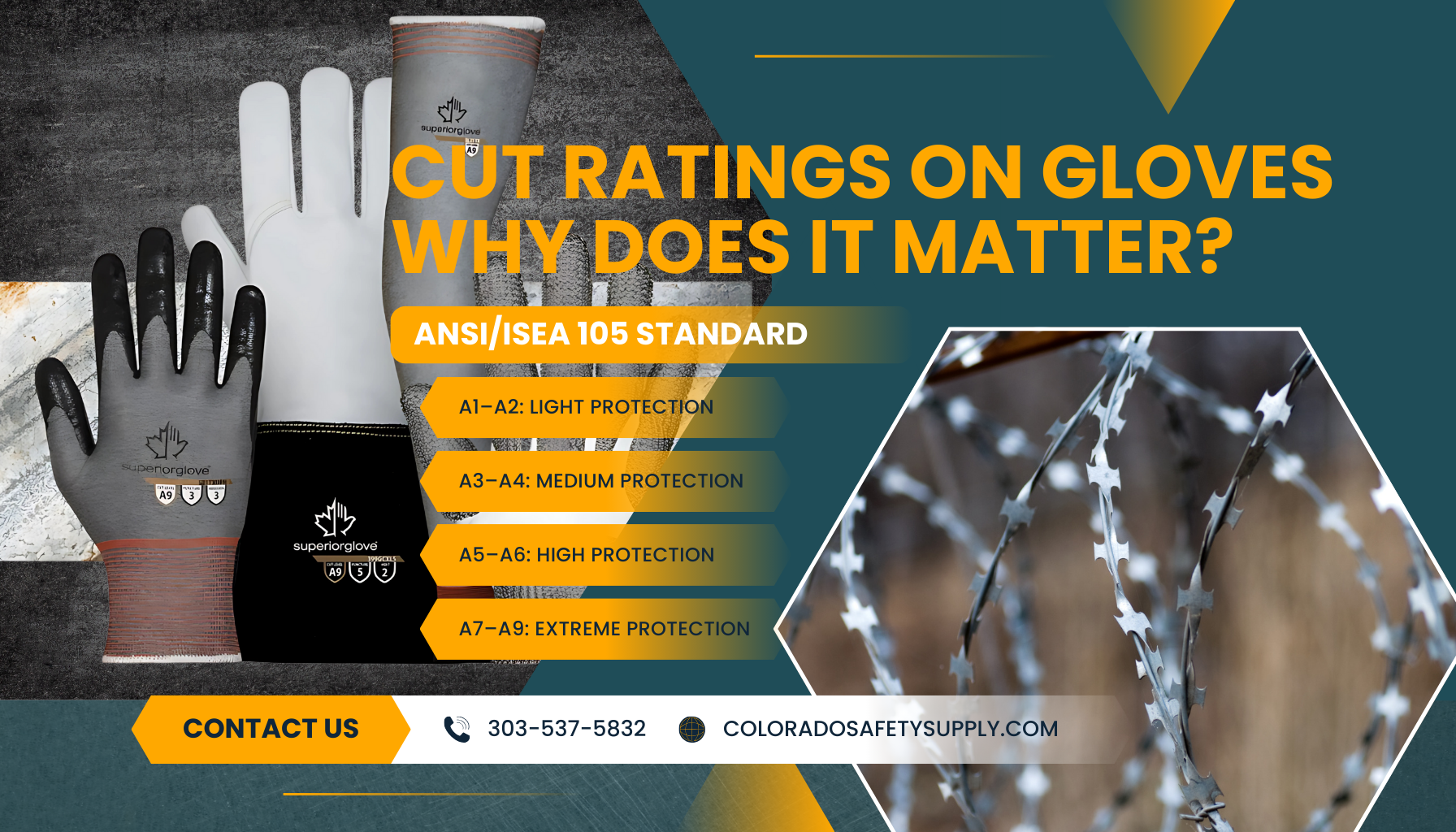Not all gloves are created equal—and when it comes to working around blades, glass, or sheet metal, that’s more than just a saying. A glove’s cut rating is one of the most important safety features to understand before stepping onto any jobsite where sharp edges are involved.
In the U.S., most safety pros rely on the ANSI/ISEA 105 standard, which uses a 9-level rating scale (from A1 to A9) based on how many grams of force it takes to cut through the glove material with a sharp blade. The higher the number, the more protection you’ve got.
-
A1–A2: Light protection for low-risk tasks like office maintenance or general material handling
-
A3–A4: Medium protection for construction, warehouse work, or HVAC tasks
-
A5–A6: High protection for jobs involving glass, sheet metal, or sharp tools
-
A7–A9: Extreme protection for heavy manufacturing, stamping, and auto plants
If you’re working with anything sharp, skipping cut protection isn’t just risky—it’s non-compliant and potentially dangerous. Always check the glove tag or box for the ANSI cut level label. That simple detail can make a major difference in keeping hands safe and jobsites incident-free.
And while the EN 388 standard (common in Europe) is still around, ANSI is the go-to in the U.S. thanks to its clearer, more consistent ratings.
Pro Tip:
If you’re unsure what cut level is right for your team, don’t guess—ask. The right glove keeps productivity up and injuries down.
🔗 Browse our full collection of cut-rated gloves here:
ColoradoSafetySupply.com/Gloves »
📞 Still have questions? Call us at 303-537-5832. We’re here to help.















